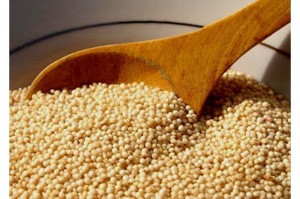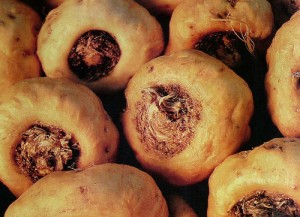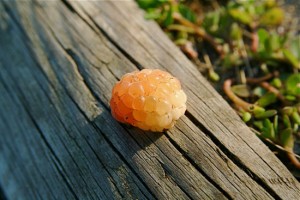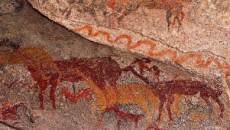By Diego M. Ortiz
Peru This Week

Earlier this week, in our annual April Fool’s Day newsletter, we told you about a miracle plant from the Amazon that helped you to easily shed unwanted pounds. Well, for everyone who didn’t pick up on it, the article was an April Fool’s Day joke.
As a “thank you” for being loyal readers with a sense of humor, let’s look at some true miracle plants, fruits and vegetables found in Peru.
Let’s start with maca, which is a root that belongs to the radish family. It is grown in the mountains of Peru and sometimes-called “Peruvian ginseng” because of the root’s long valued use and numerous applications.
Maca is rich in vitamins B12 and protein, which can be helpful for vegans. It also keeps you healthy by providing plenty of calcium, zinc, iron, magnesium, phosphorous, and amino acids.
But where maca gets interesting is it’s use for improved sexual function in both men and women. It serves to boost your libido and increase endurance. At the same time it balances hormones and increases fertility.
For women, maca relieves menstrual issues and menopause. It alleviates cramps, body pain, hot flashes, anxiety, mood swings and depression.
Many athletes use maca for peak performance. It keeps your bones and teeth healthy and allows you to heal from wounds more quickly.
This miracle root is also ideal for those who wish to boost their mental energy and focus.

Kiwicha, known in English speaking countries as amaranth, is the next Peruvian miracle gluten-free whole grain. Just like quinoa, its seeds contain impressive amounts of proteins as well as amino acids. This plant may be instrumental in helping lower cholesterol, reducing the risk of hypertension, and heart disease.
Kiwicha contains many vitamins A, B-6, K, C, folate, and riboflavin.
There are many miracle uses for kiwicha, especially because eating it has been known to prevent grey hair. The word “amaranth” in Greek means “everlasting,” and the Aztecs called it “food of immortality.” In india, where it has been eaten since the 1500s, it’s know as “rajgeera” which translates as “king’s grain.”
The grain has earned a reputation for it’s high nutritional value and was selected for astronaut’s diet. Kiwicha was even grown in space travel by NASA in 1985.

The next item on our list of actual miracle foods is the chia seed. Ancient civilizations like the Incans, Mayans, and Aztecs used chia seeds to bring strength to hunters and warriors on long expeditions.
Chia seeds are rich in polyunsaturated fats, especially omega-3 fatty acids. Chia seeds’ lipid profile is composed of 60 percent omega-3s, making them one of the richest plant-based sources of these fatty acids.
The seeds also have a ton of fiber, which is known for lowering cholesterol and regulating bowel function. On top of that, Chia seeds are rich in antioxidants that help protect the body from free radicals, aging and cancer.
But they are also a dieter’s best friend because they have a gelling action that when eaten absorb a lot of liquid and give the eater the feeling of being full, known as satiety.
This feeling of being full and satisfied helps lower food cravings between meals. The combination of protein, fiber and the gelling action of chia seeds when mixed with liquids all contribute to their satiating effects and less snacking through out the day.

Orange-colored golden berries, also known as Incan berries, have been cultivated in the America for centuries. They have also been revered for their health benefits and mouth puckering sweet and sour flavor. They are commonly eaten raw like blueberry or raspberry and are often dried and sold in “dehydrated formats that resemble raisins in shape and texture.
Golden berries pack a punch of vitamin A, which is great for eye health. But they are also believed to help maintain a healthy weight, ward off disease, and improve organ function.
Traditionally, the golden berry has been used to help a variety of ailments including asthma, edema, optic nerve disorders, throat afflictions, intestinal parasites, and a variety of skin conditions.
So maybe the sweat vine wasn’t exactly what you would call “real, ” but nonetheless there are a number of miracle plants that can be found within Peru. Who knows, if we keep looking we just might find the real sweat vine.




